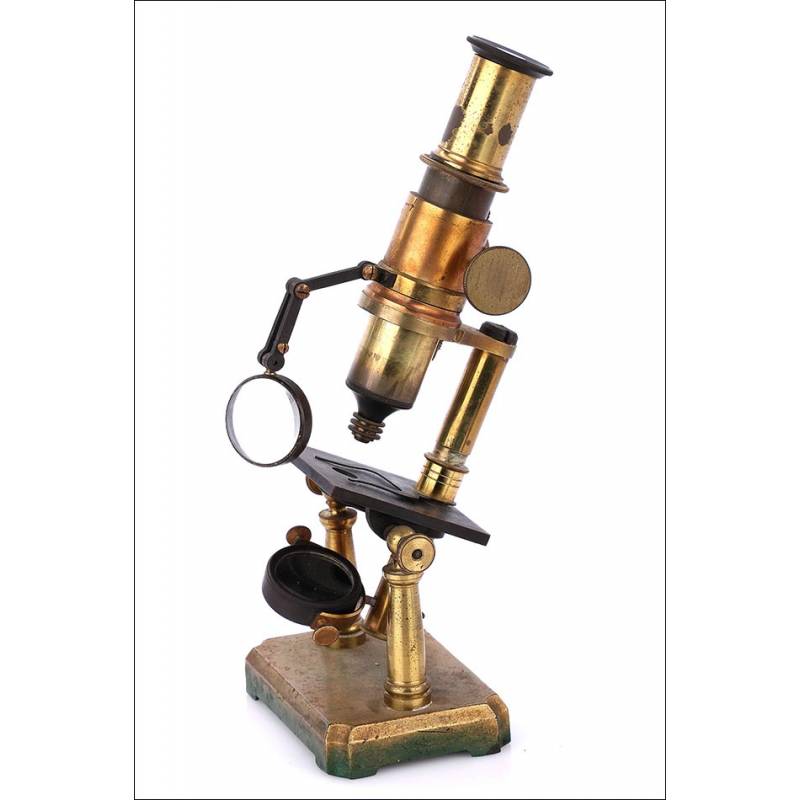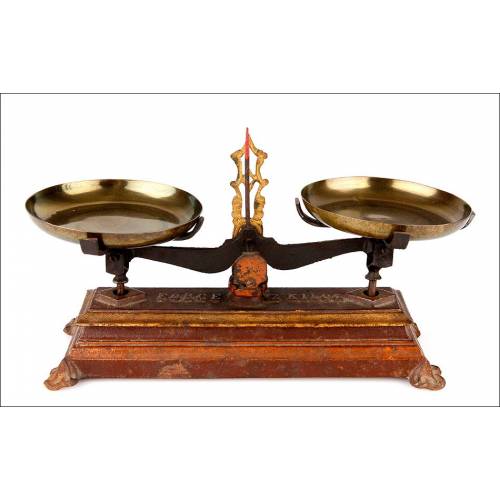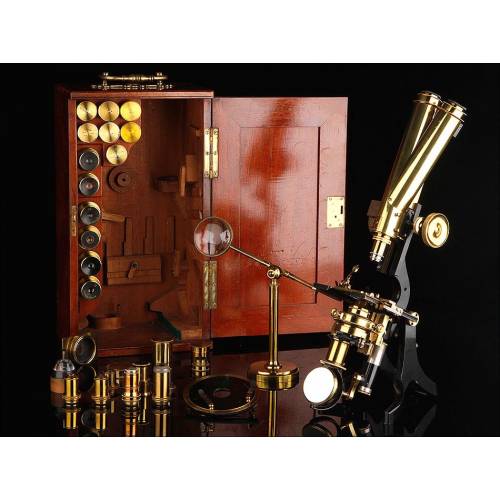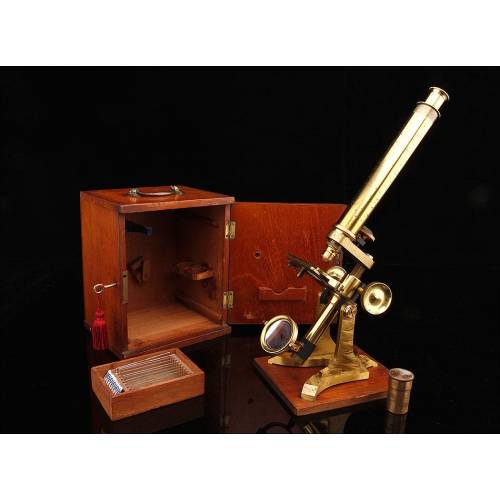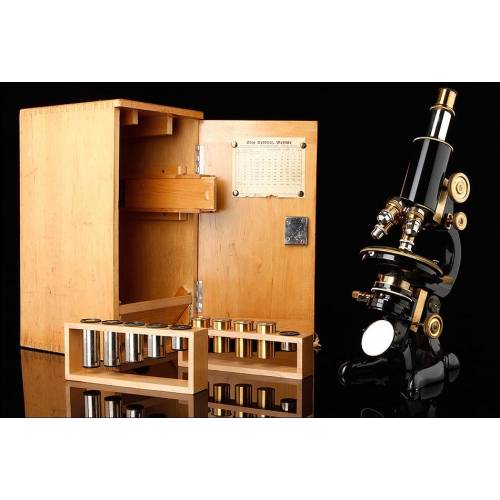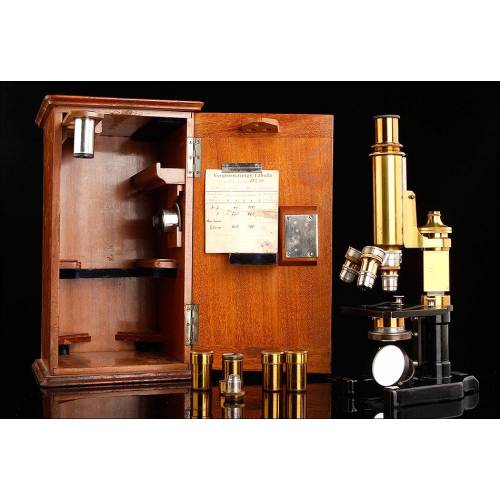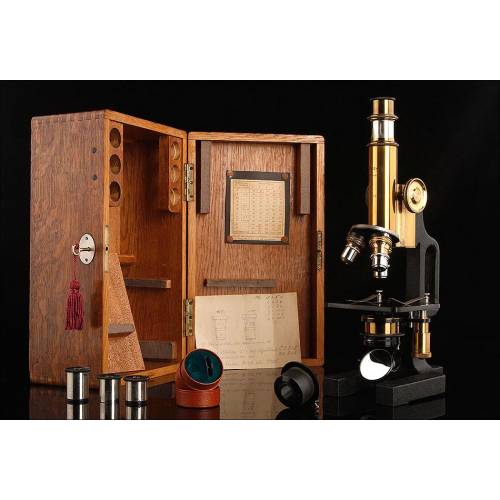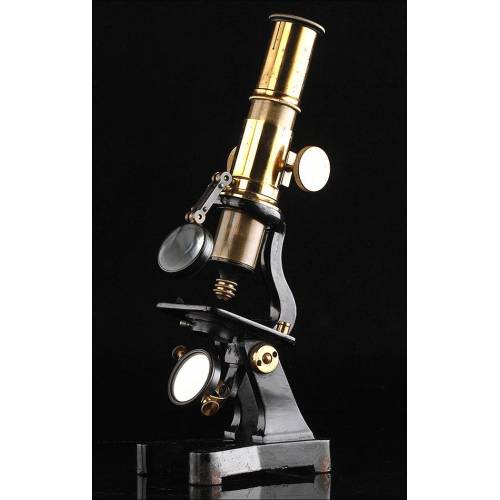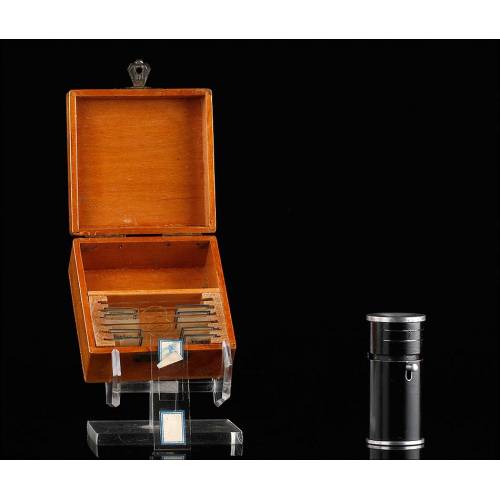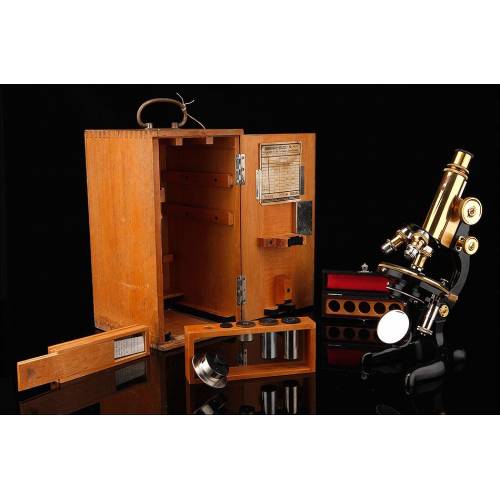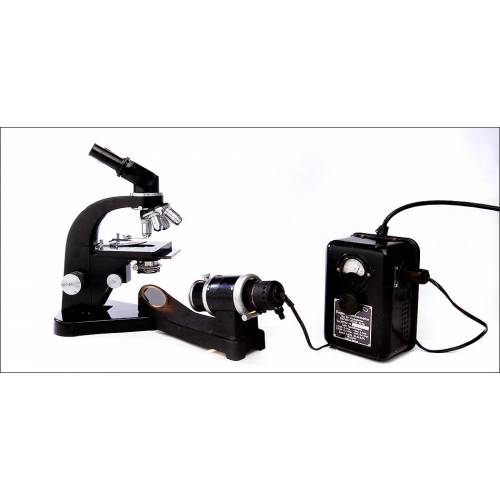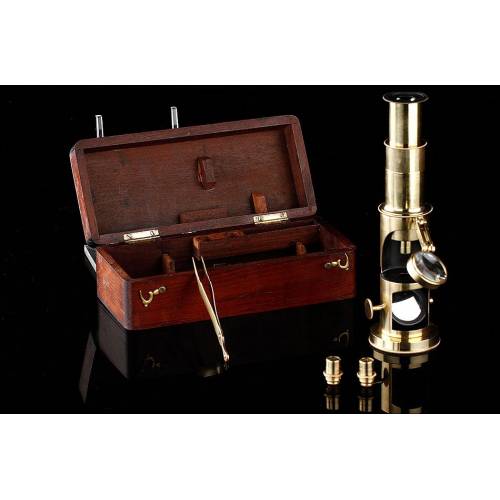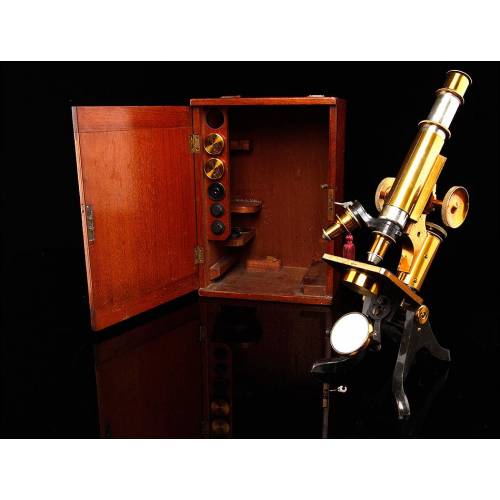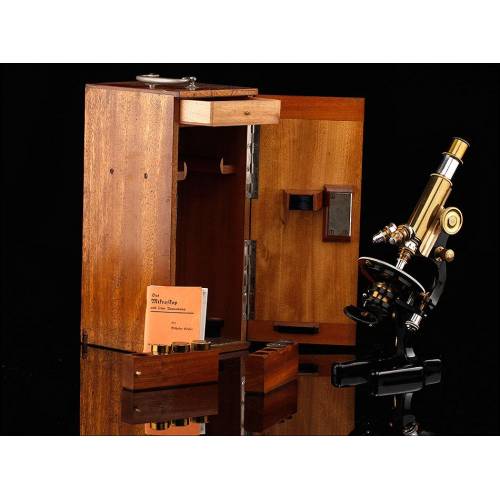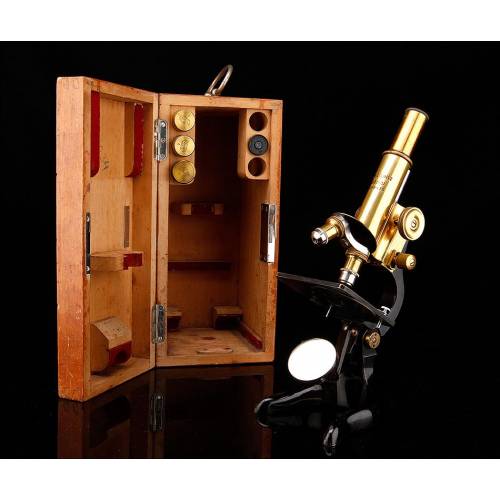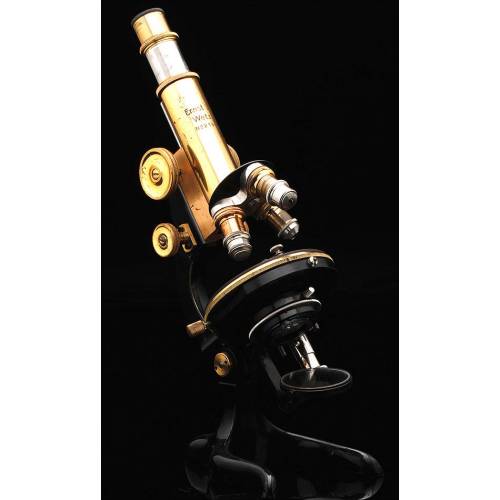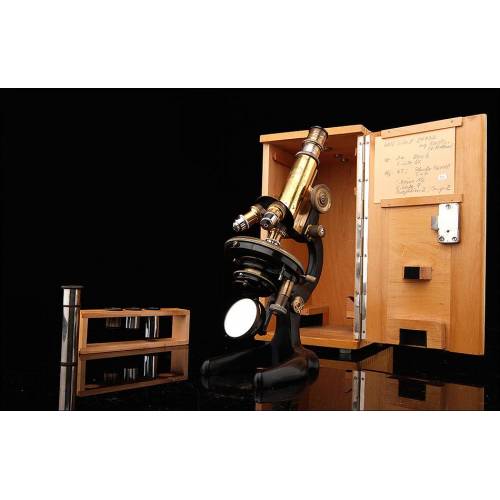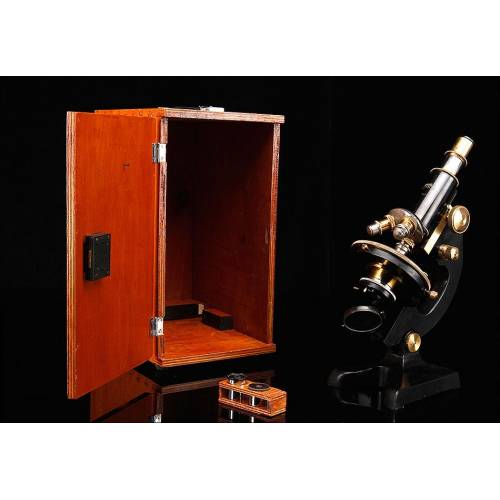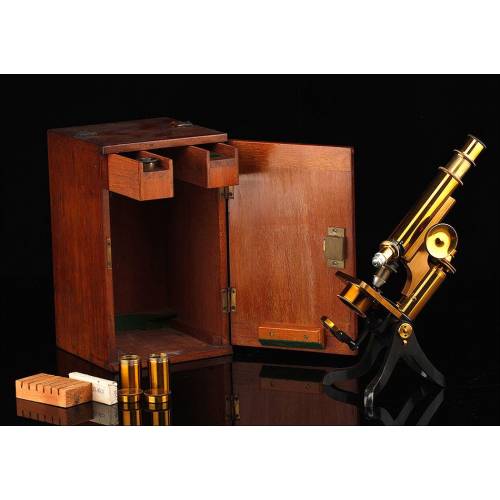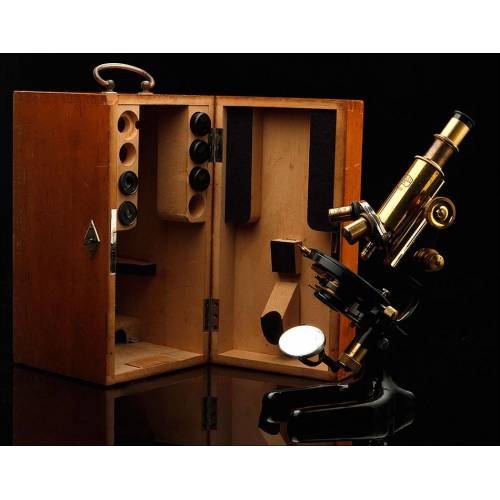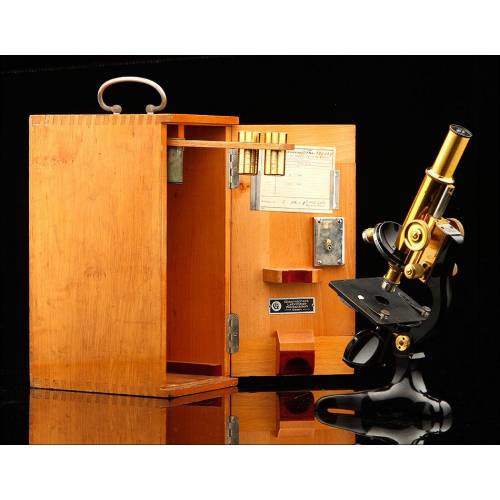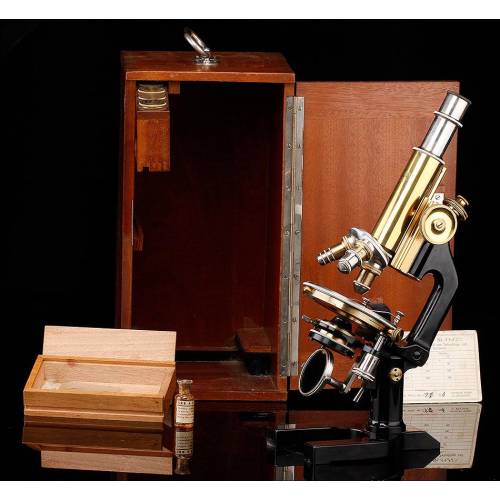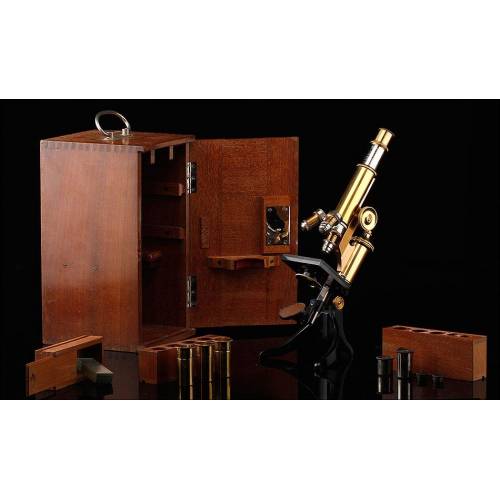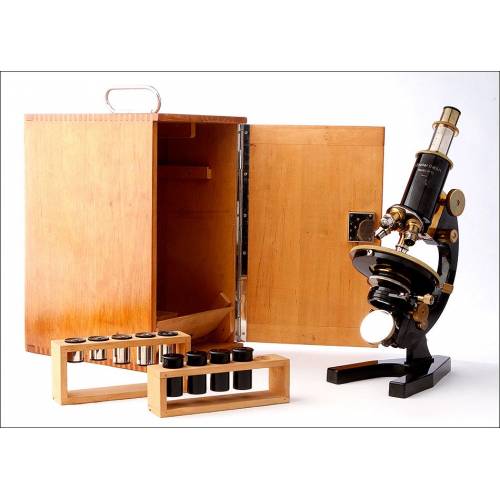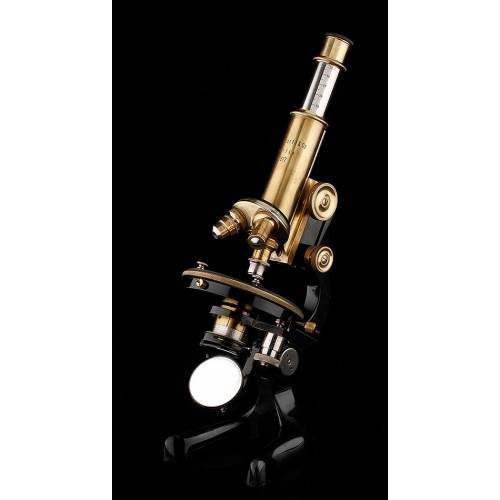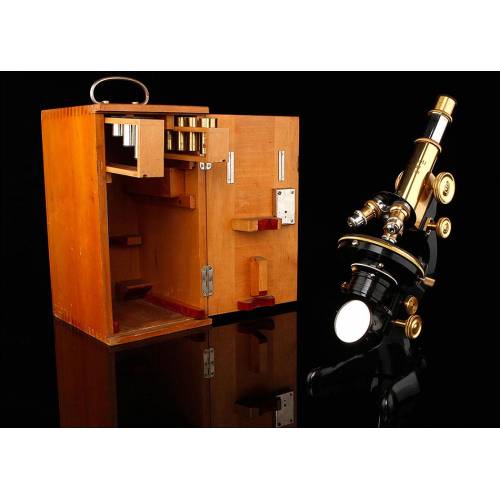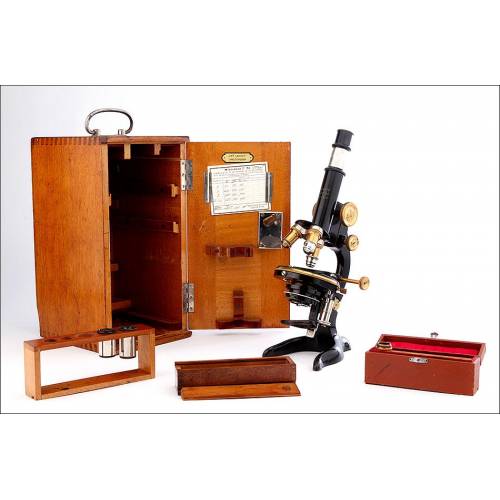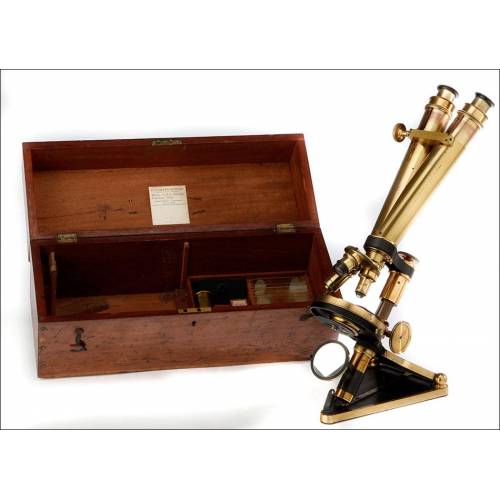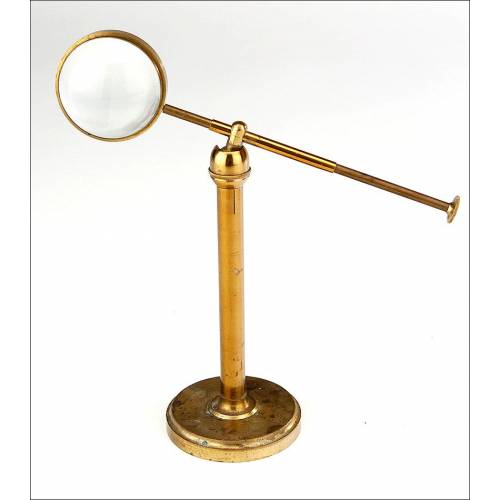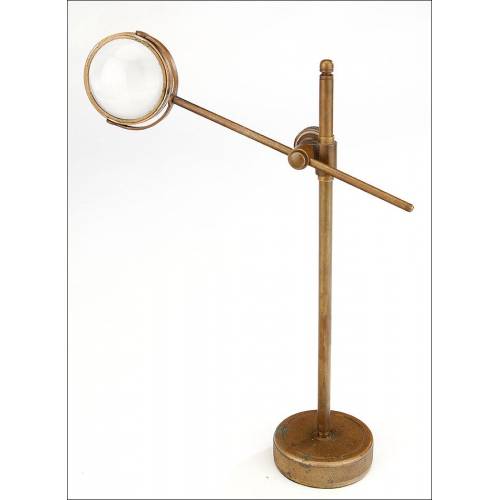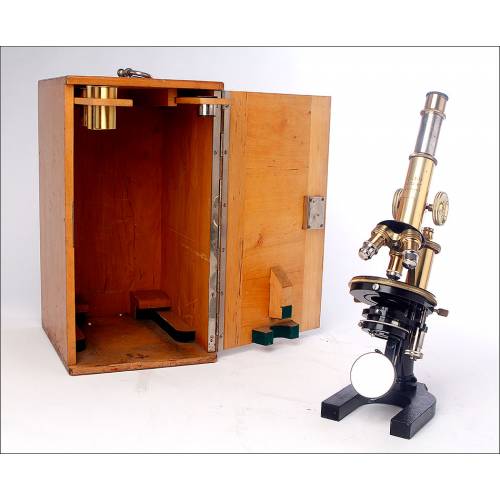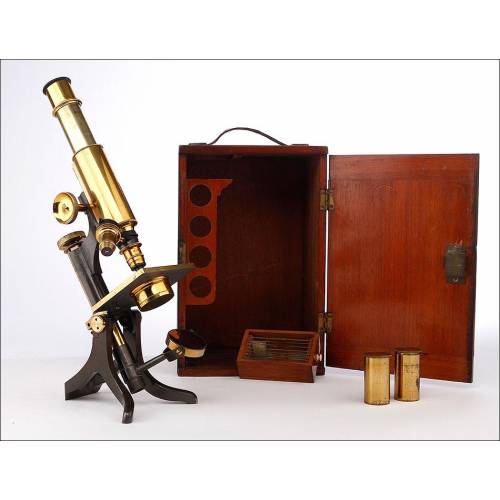C-292
Antique Radiguet Opticien double pillar microscope. 1875
Antique Radiguet Opticien double pillar microscope in very good condition. In good working order. Very nice and original, it is perfect for demanding collectors.
Sold!
Lovely antique double-pillar microscope in very good condition, made by the French brand Radiguet Opticien in 1875. In spite of being almost 150 years old, this microscope preserves all its original component parts and pieces and remains in working order. Its simple and fine design, sturdy and functional, is very remarkable and boasts all the charm and personality of scientific-research instruments used in the 19th century. The microscope is made of brass and mounts some black-enameled iron pieces. The base is a thick rectangular brass piece; the instrument rests on it, supported by two side pillars that provide it with stability. The stated pillars are connected to respective mobile parts that make it possible to move the microscope in order to better catch the light and make its use easier. The stage is connected to a piece which supports the turret; attached to the front of the turret side by an articulated arm there is a magnifying glass to concentrate the light. The stage mounts a delicate black iron lyre-shaped piece designed to hold the glass plates in place. Under the stage we can see the diaphragm and the double oscillating mirror, original from the time and in really good condition. As gorgeous as authentic, this antique Radiguet Opticien microscope shows clearly the high quality that characterized the items produced by the famous optic-material manufacturer.Measurements: Height: 9.8-11 in / 25-28 cm.Radiguet Opticien History The company Radiguet Opticien started out in Paris, in 1805. Then, optician M. Chevalier opened his own business in the French capital city and develops a loyal clientele during 25 years. In 1830 Chevalier retires and the business is taken over by Marie-Honoré Radiguet, who turns it into an optic-material manufacturing and selling firm. Between 1850 and 1860, Honoré-Antoine Radiguet succeeds his father and starts producing measurement instruments such as barometers and thermometers, as well as optic equipment. In 1880 another Radiguet son, Arthur-Honoré, decides to begin making electric and steam-powered devices for scientific use, as well as photo cameras and X-ray machines. In 1899 Radiguet merges with Georges Massiot to create a new firm, Radiguet & Massiot. From then on they will also manufacture cinema projectors, and they will keep on making them for the following decades. In 1905 Arthur-Honoré Radiguet dies (probably because of excess X-ray exposure) and the company is left in the hands of Georges Massiot.

